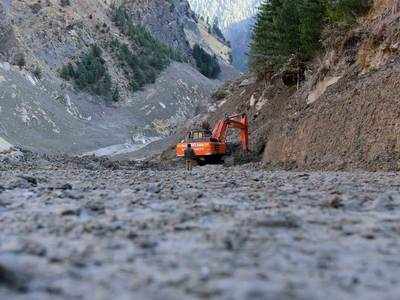
Image Source: Timesofindia
The Indian Himalayan Region (IHR) is a unique and diverse ecological zone that spans 12 states and covers about 16.2% of the country's geographical area. The region is home to rich biodiversity, cultural heritage, and natural resources. It also provides vital ecosystem services such as water, food, energy, and climate regulation to millions of people living in the plains. However, the IHR is also facing multiple challenges such as climate change, natural disasters, deforestation, land degradation, pollution, and unplanned development. These challenges pose serious threats to the ecological integrity and sustainability of the region.
It is imperative to assess the worthiness of any significant human endeavour in terms of its impact on the environment. Environment Impact Assessment (EIA) is one such process defined by the United Nations Environment Programme (UNEP) as a tool to identify the environmental, social, and economic impacts of a project before it is implemented. This tool compares various alternatives for the proposed project, predicts and analyses all possible environmental repercussions in various scenarios. The EIA also helps decide appropriate mitigation strategies.
However, the current EIA process in India is not adequate to address the specific needs and challenges of the IHR. The EIA notification of 2006, which lays down the procedure and criteria for granting environmental clearance to projects, does not take into account the fragility, diversity, and uniqueness of the Himalayan ecosystems. The notification applies a uniform set of standards and norms for all regions of the country, irrespective of their ecological and socio-cultural differences. Moreover, the notification has been amended several times in favour of easing the regulatory burden on industries and diluting the public participation and transparency aspects of the EIA process.
Therefore, there is an urgent need to develop a separate EIA framework for the IHR that reflects its ecological and socio-economic realities. Such a framework should have the following features:
- Regional approach: The EIA framework should adopt a regional approach that considers the cumulative and synergistic impacts of multiple projects within a river basin or a landscape. It should also take into account the transboundary implications of projects that affect neighbouring countries or states.
- Differentiated criteria: The EIA framework should have differentiated criteria for categorizing projects based on their location, scale, and potential impact on the Himalayan environment. Projects that are located in ecologically sensitive areas such as glaciers, wetlands, wildlife corridors, sacred groves, etc., should be subjected to more rigorous scrutiny and higher standards of compliance.
- Participatory process: The EIA framework should ensure meaningful participation of all stakeholders, especially the local communities, in every stage of the EIA process. It should also ensure that the information and data related to the projects are made available in local languages and formats that are easily accessible and understandable by the public.
- Precautionary principle: The EIA framework should adopt the precautionary principle that states that when there is uncertainty or lack of scientific consensus about the environmental impacts of a project, the decision should be in favour of protecting the environment. It should also incorporate the concept of environmental justice that ensures that no section of society bears a disproportionate burden of environmental harm.
Conclusion:
The IHR needs its own EIA framework that is sensitive to its ecological and socio-cultural diversity and responsive to its developmental aspirations. Such a framework would not only safeguard the
Himalayan environment but also enhance its resilience and sustainability.